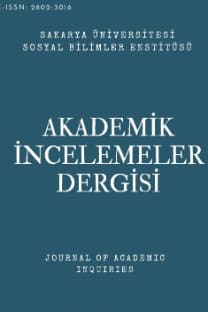Boza Consumption in Early-Modern Istanbul As an Energy Drink and a Mood-Altering Substance
Öz
The consumption of substances such as coffee is known to have gained popularity in the early-modern period along with increased urbanization and the proliferation of public places such as coffeehouses, and bathhouses in towns. Marshall Hodgson refers to the use of such substances in the Venture of Islam, underlining their increase in popularity in the Islamic world, particularly following the Mongol era.[1] Boza is a sweet and fermented drink made from millet, chickpeas or barley, which is known to have equivalents in the Mediterranean, the Middle East, Crimea and the Balkans. Its consumption partly falls under the category of mood-changing substances along with alcoholic drinks as boza is alcoholic when fermented long enough. This article focuses on boza consumption in seventeenth-century Istanbul based on the travelogue of Evliya Çelebi. I compare this narrative with some aspects of my previous study of bozahane affairs in fifteenth-century Bursa, wherever the contents are relevant.[1] Marshall Hodgson, The Venture of Islam, II, 3 Vols. (Chicago: University of Chicago Press, 1974), 58-69.
- Yayın Aralığı: Yılda 2 Sayı
- Başlangıç: 2006
- Yayıncı: Sakarya Üniversitesi Sosyal Bilimler Enstitüsü
Sayıdaki Diğer Makaleler
Etkilenme Korkusundan Arzu Nesnesinin Tahribine: Mimar Turgut Cansever’de Ötekinin İnşası
Erken Modern Dönemde İstanbul'da Bir Sağlık İçeceği ve Keyif Verici Olarak Boza Tüketimi
İtalya'nın Oniki Ada'yı İşgali ve Güney Arnavutluk Sorunu (1912-1918)
Avrupa Dış İlişkiler ve Güvenlik Politikası ve Üç Büyükler: Almanya, Fransa ve İngiltere
İtalya’nın Oniki Ada’yı İşgali ve Güney Arnavutluk Sorunu (1912-1918)
Şerʿiyye Sicilleri’ndeki Mefkūd Kayıtları ve İstanbul’un Kayıp Bakkalları
Osman Gazi’nin Kimliği Meselesi ve Cihanşümûl Bir Devlete İsminin Verilmesinin Sebepleri Üzerine
